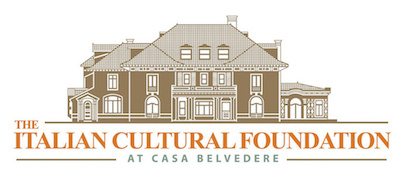History of Grymes Hill
Grymes Hill is named after Suzette Grymes, widow of the first governor of Louisiana, William Charles Cole Claiborne, who settled on Staten Island in 1836 (she had remarried a prominent New Orleans lawyer, John R. Grymes, after Governor Claiborne died in 1817).
The area was originally named Signal Hill after a British signal station. Deeds of 1836 and thereabout show that the hill was known as Castleton Heights. Grymes Hill was part of a land grant in 1687 to Thomas Dongan, who served as Governor of the Province of New York. Between 1830 and 1833, a local developer, Major George Howard, purchased 42 acres, which included all land between Eddy and Louis streets. Major Howard built many of the hill’s earliest homes, and his name survives in Howard Avenue, the hill’s main street; a portion of this street was known for a time as Serpentine Road due to the hill’s bedrock consisting of serpentinite. The neighborhood has many fine homes dating from the 1920s that overlook New York Harbor.
Former prominent residents
Governor Thomas Dongan (1634-1715) in 1687 was granted a 5,100-acre manor, of which Grymes Hill was a portion.
Oroondates Mauran, a merchant of New York who in subsequent years became owner of the first Italian Opera House, purchased his Grymes Hill home in 1831. In winter he lived in Manhattan, and in the summer on Staten Island. Furthermore, together with Cornelius Vanderbilt, he owned the Staten Island Ferry. He was also one of the oldest members of Union Club of the City of New York.
John Randolph Grymes, a noted New Orleans lawyer, whose wife was Madame Suzette Grymes, bought land at Howard Avenue and Grymes Hill Road in 1836.
Capt. Jacob Vanderbilt, brother of Cornelius Vanderbilt, built a mansion on Grymes Hill.
John Nesmith was an American politician who served as the 25th Lieutenant Governor for the Commonwealth of Massachusetts in 1862. Between 1836 and 1865, the Nesmith family purchased a large tract from 24 separate property owners.
Sir Edward Cunard of the shipping and passenger line family built his mansion circa 1851. The 38-acre Grymes Hill family estate was named “Bellevue” and was built in the Italianate style. Cunard chose the land for its ocean view.
Albert Brisbane, an American utopian socialist, popularized the theories of Charles Fourier. He was one of two sons born to James Brisbane, a wealthy landowner. His house was erected in 1854.
Civil War general William Greene Ward also built a mansion in 1865.
John J. Cisco, a merchant in the dry goods business in New York, retired at age 36 with a fortune. About 11 years later in 1853, he was appointed by President Pierce, Assistant Treasurer of the United States, and placed in charge of the Sub-Treasury in New York. He purchase the house erected in 1855 by Ernest Cazet, under the superintendence of Frederick Law Olmsted, a noted landscape architect.
William Horrmann, owner of Stapleton’s Rubsam & Horrman Brewing Company,[13] built Horrmann Castle at 189 Howard Avenue in 1910. The building was torn down in the 1960s.
Louis A. Stirn, a silk importer, built his home in 1908 at 77 Howard Avenue. In 2006, the Stirn mansion became a New York City Landmark and is now called Casa Belvedere.
John Gans, a steamship-company owner, built his family estate on the hill because it overlooked the New York Harbor where he operated his steamship company. St. John’s University’s Flynn Hall is the former home of John Gans.
Louis A. Dreyfus, a local maker of chewing gum, built his former estate on what it is today part of the 13-acre Notre Dame Academy, an all-girls Catholic elementary and high school.
Charles Wallace Hunt, an American mechanical engineer, inventor and business executive, was known as President of the American Society of Mechanical Engineers. He invented new methods in the storing and handling of coal. He purchased his residence on Grymes Hill in 1900.
William Butler Duncan, a New York banker, in 1858 purchased a 20-acre property from Madame Grymes.
Mamie Fish, New York Socialite and one of the so-called Triumvirate of American Gilded Age society.
Today
Grymes Hill is best known currently for being the home of two institutions of higher learning: Wagner College, and the Staten Island campus of St. John’s University. The St. Johns campus of 16.5 acres was originally a small Catholic women’s institution, Notre Dame College, which closed in 1971 when St. Johns University took over the campus. Also on the hill is Notre Dame Academy, a Roman Catholic elementary and high school for girls. Adjacent to (and owned by) Wagner College is the site of a former Roman Catholic high school, named Augustinian Academy after the order of monks who ran it; the school closed in 1969. Near the foot of the hill, on Foote Avenue, is P.S. 35, the Clove Valley School. Also located on Grymes Hill is Casa Belvedere, a center for Italian arts and culture, located in the Louis A. and Laura Stirn House which was listed on the National Register of Historic Places in 2010, and designated a NYC Landmark in 2001.
Most homes in the neighborhood are private residences, many of which were constructed for Manhattan businessmen. Fred Trump constructed several hundred two- and three-bedroom residences in the late 1940s. These are 423 garden apartments along Howard Avenue and Arlo Road. Fred Trump’s son, Donald Trump, sold these apartments to an unrelated corporation in 2007. Grymes Hill Manor Estates was built in 1953 as rental garden apartments, and switched to co-op status in 1983. It has 152 apartments centering on Seth Court, with some on other streets. Two high-rise apartment buildings at the foot of Howard Avenue were converted to condominiums following a major fire in one. There are several apartment buildings on Victory Boulevard. Two new apartment buildings have been constructed facing the Staten Island Expressway. One was turned into condominiums in 2004. The other is being offered as senior citizen housing.
There are no public parks on Grymes Hill, other than Hero Park, a 2-acre park donated in 1920 by Dr. and Mrs. Louis A. Dreyfus. Grymes Hill includes two cemeteries, both located along Victory Boulevard. Woodland Cemetery dates back to the 19th century, and some headstones are in German, reflecting the population of the day. Silver Lake Cemetery also dates back to the 19th century, and was the original burial site for the Hebrew Free Burial Association.
Grymes Hill residents are within walking distance of the sprawling Silver Lake Park, which features a running path, golf course, and several public tennis courts. The neighborhood also borders Clove Lakes Park, with ponds, baseball fields, and a row-boating house among its amenities.
Neighborhoods around Grymes Hill include Ward Hill to the north, Silver Lake to the west, Sunnyside and Emerson Hill to the south; to the southeast is Concord, and Stapleton and Stapleton Heights to the east. The east side of the hill is defined by Van Duzer Street and Richmond Road to the intersection with the Staten Island Expressway, which, with Clove Road, defines the southern side. On the west is Victory Boulevard. Some claim Cebra Avenue for the northern border, while others believe the border is Louis Street.
Grymes Hill, which has views of Lower New York Bay and the Narrows, is the second highest point on Staten Island, reaching its greatest elevation of 310 feet above sea level at a point on the Wagner College property behind a parking lot and near the football field. Hero Park, 3 acres in size, is located at the intersection of Victory Boulevard and Louis Street, abutting the Notre Dame Academy property. The area’s hillsides and trees are protected by the Hillside Preservation Zoning District which took effect in 1987. The Serpentine Art and Nature Commons owns and maintains several trails on preservation land.
Starting in the mid-19th century, breweries dug caves into the hill to use in the production of beer. Some of these caves off of Van Duzer Street were later incorporated into a popular restaurant, which provided catering for the movie The Godfather during shooting on Staten Island. The restaurant has since closed, and the entire site was redeveloped with a townhouse complex.


